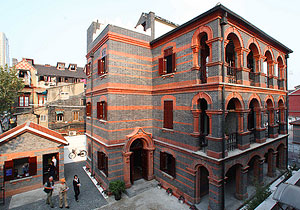Shanghai's Jewish Past (Ohel Moshe Synagogue & Shanghai Jewish Refugee Museum)

Although China's Jewish history can be traced back many hundreds of years, Shanghai's Jewish past began in the mid-nineteenth century when Shanghai became a major port and base for foreign trade in China.
The majority of the first Jews in Shanghai were from countries like Iraq, Egypt and India who came for trade and business. Other Jews to come at this time were mainly from Eastern European countries and those from Russia fleeing persecution, though in total there were only around 700 Jews in Shanghai at this stage. The next major wave of Jews into Shanghai came in 1917 from Russia as people escaped from the Russian Revolution then in the 1930/40s from Germany and countries under Nazi occupation. During this time the population soared to about 30,000.
This growing population built 3 Synagogues in the first half of the 20th century, the most famous and important being the Ohel Moshe Synagogue in 1927. This became the community's base during the start of the Second World War and Shanghai accepted more Jewish refugees than anywhere else in the world between 1937 and 1941. Japan's occupation of Shanghai in 1941 stopped the immigration and forced the Jews to live in unpleasant conditions in the Hongkou district of the city. This caused many of the Jews to leave Shanghai again in search of a better life and gradually most of the community left.
The Ohel Moshe Synagogue became the Shanghai Jewish Refugees Museum and is a popular place for Jewish and non-Jewish visitors to remember the cities Jewish past. Walking tours around the old Jewish areas are also popular for those with an interest. In 2006 a Jewish center was opened again in Shanghai for the first time in 50 years.